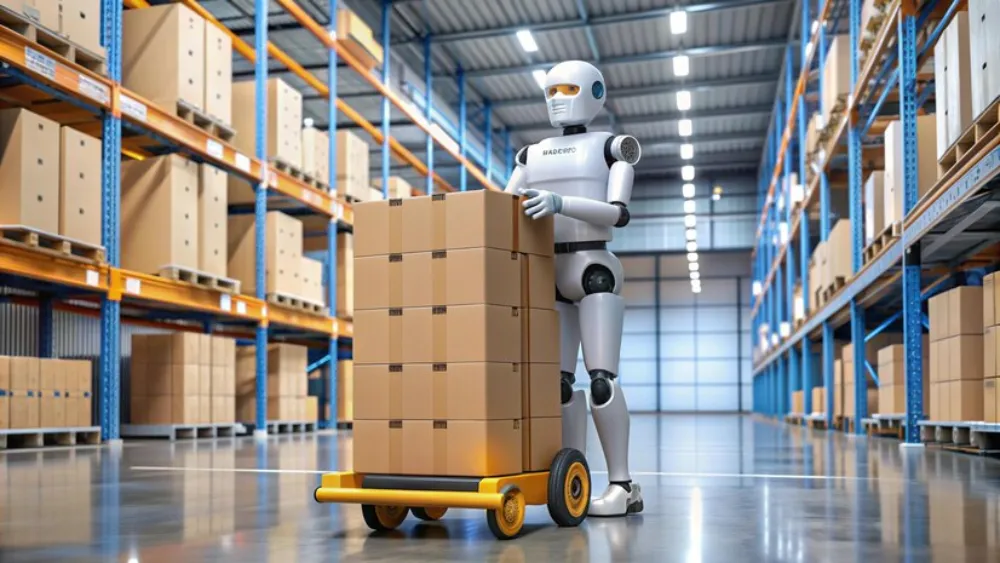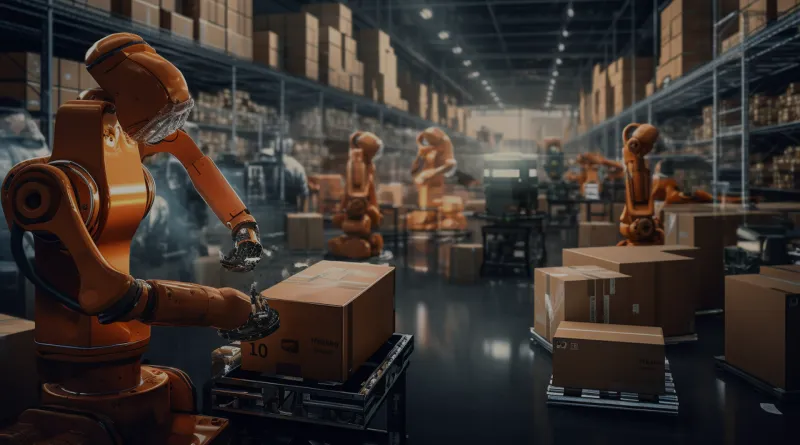How AI in Logistics Is Revolutionizing Supply Chain Efficiency in 2025
Artificial intelligence (AI) has altered logistics in the year 2025 as a laborious task into a vibrant, brilliant system that changes the efficiency of supply chains. Since the AI logistics market has surpassed the value of 20.8 billion in 2021 and continues to grow at 45.6 percent CAGR since 2020 (McKinsey Global Institute), it is no longer a superfluous tool to have in business but rather a mandatory one. Using AI, costs are being mowed down, visibility improved, and customer experiences provided all the way through predictive maintenance to autonomous delivery. This paper will discuss the changes that AI is bringing to the field of logistics, and give distinctive knowledge, localization to India, and citation of reputable resources to be of practical use to businesses making their way through this revolutionary period.
The AI Revolution in Logistics
Supply chain optimization uses AI in the industry of logistics to take advantage of machine learning (ML), computer vision, natural language processing (NLP), and predictive analytics. In comparison to usual systems which were based on predetermined set rules, AI follows the current data in correlation with a real-time-based proactive decision-making. GrowthJockey points out that AI-powered logistics becomes not a reactive process that humans do manually but a self-governing process that anticipates disturbances and makes resources flow more efficiently. As an example, due to AI implementation, supply chain leaders noted efficient and scalable operational transformations, with 78 percent reporting critical changes since the adoption of AI according to DocShipper analysis.
Key Applications Driving Change
- 1. Predictive Maintenance and Fleet Management: AI also foresees the repairs before they happen, characterizing the health of vehicles as they are reported by IoT sensors assigned to them. In another example, the AI system developed by Maersk processes 2 billion data points every day (Data obtained by 700+ vessels) and has utilized 30% downtime and saved 300 million per year (DocShipper). Companies such as Delhivery in India, where logistics contributes 14 per cent to GDP ( Economic Survey 2024) is utilizing AI to make improvements to the fleet upkeep, reducing the cost of fuel by 10-15 per cent, besides improving delivery stability in busy areas.
- 2. Optimization of the warehouse space and inventory: AI-based autonomous mobile robots (sometimes called AMRs or AGVs) can also move around warehouses, raising picking accuracy up to 99.8 percent and saving fulfillment costs by 20 percent compared to using manual fork trucks (DocShipper). Inventory optimization is also done when AI forecasts the demand accurately. The AI helps Flipkart, an e-commerce giant in India with 100 000+ SKUs to keep the inventory below the optimal by 15% and product availability high at 98%, especially in a market where 700 million consumers conduct online purchases (Statista, 2025).
- 3. Self Driven Routing and Delivery: Artificial intelligence runs traffic, weather, and product information to segment the best delivery route and match it with the products on the fly. The so-called Smart Trucks designed by DHL save 10 million delivery miles per year, and this model shortens fuel consumption levels by 12 percent (DocShipper). India The last-mile delivery of goods makes 65 percent of the logistics cost in the country (ROCKWELL Automation), and scheduled startups such as Zomato Hyperpure have been able to reduce delivery times by 25 percent using the AI to improve the customer satisfaction levels in megacities like Bangalore and Delhi.

Benefits of AI in Logistics
AI delivers measurable benefits that redefine supply chain efficiency:
- Cost Savings: Through route optimization, optimized fuel use, and inventory, an organization can save a lot of money as is the case with Walmart, which saved 1.5 billion per year through AI-based inventory management (DocShipper). According to Rockwell Automation, the logistics companies in India have been reporting a 10 20 percent cost massacre using AI.
- Increased Visibility: AI offers real time tracking of supply chains across the world. The AI control towers used by DB Schenker can track 13 million deliveries every day and identify the disturbance in just 3 minutes, using up to 45 million EU annually (DocShipper).
- Enhanced Customer Experience: AI helps to make accurate delivery estimation and anticipates problem resolutions. Social media and weather intelligently entering the AI system of Unilever increases the forecast precision to 92% and eliminates 40 percent of the out-of-stocks (DocShipper).
Unique Insights: Opportunities and Challenges
The implementation of AI in logistics represents both an opportunity and a challenge as far as it must be walked down a thin line. Among them is the fact that AI will be able to build digital twins, such as replicas of existing supply chains that imitate disruptions. The digital twin of Procter & Gamble, in turn, ran 15,000+ simulated rerouting and minimized the losses experienced in 2023 in the Suez Canal blockage, reducing their losses to 18 million dollars compared to the average of the industry 42 million of dollars (DocShipper). In India, the most frequent port congestion and monsoon interruption may result in millions of dollars of savings to a logistics firm on behalf of digital twins that could forecast delays in advance.
Nevertheless, there are still problems. A challenge that includes data quality is also considered; 76 percent of organizations experience problems with master data management (DocShipper). Fragmented and fractious logistics structure and variable data formats, particularly with respect to small transporters, in India pose a difficulty to the implementation of AI. Also, there is the resistance of the workforce- employee resistance causes 72 percent of AI projects to fail (Deloitte, 2024). Indian companies should also spend on reskilling, especially in the case of tier-2 cities where digital literacy is low.
Locally, the logistics industry in India, which is worth an estimated 320 billion dollars (IBEF, 2025), is ready to have AI serve as a disruption. Its 1.4 million km roadway system and 12 large ports assisting transact exceptionally large traffic of freight still undergo inefficiencies such as 30 percent of emptied truck journeys (NITI Aayog). These can be solved by AI through the optimization of the load matching, which can be observed in the case of XPO with automated freight matching 99.7 percent (DocShipper). Nonetheless, the different regulatory environment in India such as GST compliance and state-specific permits needs to consider local specifics with an AI-based system and this area is still not fulfilled.
Implementation Strategy
To adopt AI effectively, logistics firms should follow a structured approach:
- 1. Find High-Value Use Cases: A low-complexity use case is the optimization route or demand forecasting. Measure KPIs such as time savings on delivery and savings costs.
- 2. Material Readiness Ensuring data readiness: standardize data within the transportation and warehouse systems. Pay more money to data cleaning to remove inconsistencies.
- 3. Pilot and Scale: Try pilots on a small-scale, as Maersk did with its Remote Container Management system, which reduced spoilage by 60 percent. Phase in successful pilots.
- 4. Train Workforce: Fill the skill gap by treating these employees to specific training strategies, with an AI-human interface. The logistics workforce needs digital upskilling, and India has 22 million employees to do so in this field (IBEF).
- 5. Compliance Assurance: To address the risk of privacy, the systems used in AI must comply with India and other global acts such as the Digital Personal Data Protection Act and the GDPR.
Implementation Strategy
Looking ahead, AI in logistics will evolve with:
- Generative AI: Operating in the supply chain and synthesizing disruption planning time.
- Image AI and IoT: Allowable real-time decisions in distant regions, which is essential to rural processes in India.
- Ethical AI: Achieving transparency and fairness in decisions by AI, that takes into account the variety of the supplier ecosystem in India.
Conclusion
Artificial intelligence will transform logistics supply chains in 2025 in such a way that it enables efficiency, saves cost, and increases the level of customer credibility. In India, with logistics inefficiencies weighed down by an expense of 90 billion dollars in a year (NITI Aayog), AI provides a way to grow and become competitive. With a strategic approach to adopting AI, companies can face difficulties and open up new transformational opportunities, making sure they become successful players on the global market.
Disclaimer
The information presented in this blog is derived from publicly available sources for general use, including any cited references. While we strive to mention credible sources whenever possible, Web Techneeq – Seo Company in Andheri does not guarantee the accuracy of the information provided in any way. This article is intended solely for general informational purposes. It should be understood that it does not constitute legal advice and does not aim to serve as such. If any individual(s) make decisions based on the information in this article without verifying the facts, we explicitly reject any liability that may arise as a result. We recommend that readers seek separate guidance regarding any specific information provided here.

